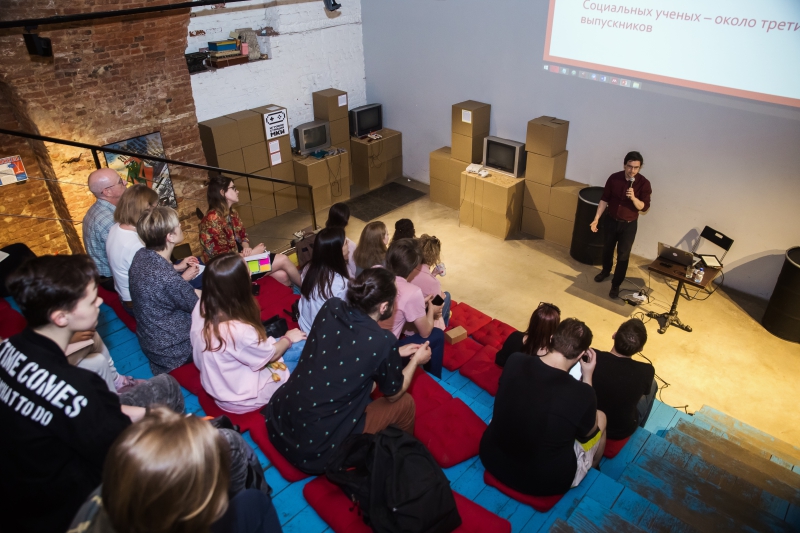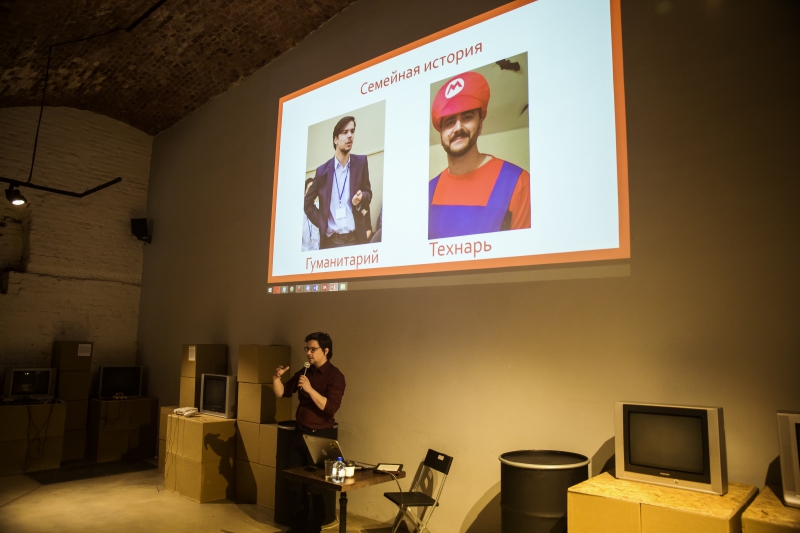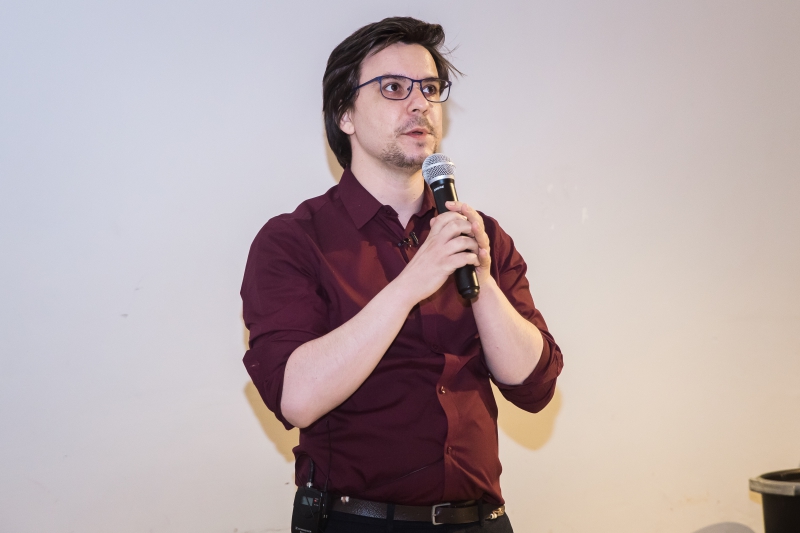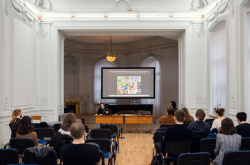Worlds of tech and culture
We’re used to splitting people into disciples of the hard and soft sciences. Statistics for 2016 show that, out of all newly enrolled students in Russia, 600,000 went into soft and 500,000 went into hard sciences. Therefore, the society is split nearly equally into those who work with technology and those who work with concepts, discourse, and words that revolve around technology or exist independently. Technology and culture are the two parts of professional culture that are represented, in one way or another, all over the world.
The differences between the members of the two groups are known and understood by most. If being an engineer or a programmer is a more-or-less universal experience and such a specialist can adjust to a new locale relatively easily, humanities specialists will need to learn the cultural context of whichever nation they come to for work. Programmers have an easier time finding work with major employers, which is far from being the case for soft science adepts.
The question of where this split had come from was answered by the British novelist and scientist Charles P. Snow in 1959, when he published a lecture he had previously read at Cambridge under the title The Two Cultures. He speaks of two cultures existing at opposite poles, which differ in rituals and their perception of each other and the world in general. The humanities, he says, are prone to despair, criticism of the world, tragedy, and end up in a moral trap caused by deep self-reflection. He also notes that while they read classic literature, they are not familiar with the natural sciences, such as physics. Scientists and engineers, on the other hand, read little classic literature and have an easier time finding work. In these “techies” he sees predominantly conservative people who create technology for the world of today, rarely longing for change.
Put simply, most tech people possess moderate political opinions, while those in humanities lean to the left side of the political spectrum. In Snow’s opinion, this separation is a result of education. While some are taught math and engineering sciences, others read literature and study the history of thought.

The British historian Raymond Williams had a different answer: these differences, he claimed, stemmed from the industrial revolution. In his opinion, the humanities were sprung forth by the sciences. When the industrial revolution began in late 18th century, it changed people’s way of life in every respect. Peasants lost their lands and had to work 14 hours a day for little pay alongside their children. The industrial revolution worsened the living conditions of several social groups, and the intellectuals who were concerned with the state of society began to sound alarm. Williams cites the many classic British writers who criticized the industrial revolution in their works and, in a search for a unifying tenet not tied to the economy, came up with the idea of culture.
A culture emerges gradually as a symbol of moral unity that brings people together through shared habits, rituals, and language. Its creators believe that it facilitates improvement. The idea of culture and its autonomy today are the result of a great deal of effort and mental work of intellectuals. The concept emerged parallel to the industrial revolution and the lifestyle it presented. One of the most prominent symbols of the 19th century are the World Fairs where each nation boasted its technical achievements as well as the uniqueness of its culture. They are characteristic of the time when incredible breakthroughs in the industry and technology coincided with a blossoming of culture, especially on the national scale. That’s how we ended up with two cultures, one of technology and another of humanities.
Counterculture and the fall of engineers
This was the case up until the mid-20th century, when the tension between the two sides began to grow. Societies that reaped the fruits of great minds (railways, the telegraph, indoor plumbing) began to question the price they paid for all this technology. This was when we began to discuss the environmental effects of the development and use of new technologies, as well as the dangers posed by their use.
At the same time, we’ve got these emerging counterculture movements (beatniks, hippies, and the like) whose agenda included criticism of technology. Counterculture historian Theodore Roszak writes in The Making of a Counter Culture how technocracy had become an issue for young people who would come to universities in search of freedom of choice and self-expression and discover that the universities were serving a different political order: tied up by government and military contracts, they fed off of nuclear physics. The USA’s participation in the Vietnam War was a hot topic, and social tension continued to grow. Today we’re seeing people around the world rise up against fake news in defense of scientific truth (the March for Science), but some 40 or 50 years ago the situation was quite opposite. And the reason for that is that back then, scientists would work for major corporations and the government, not individuals.

It is at this time of tension that a new discipline was formed that sought to establish control over scientists’ actions and outline ethical limits. In the 1960s, David Collingridge coins the Collingridge dilemma, which concerns the effort to control innovations; Collingridge explains that at the early stage of development, we cannot predict the risks brought on by a new technology, and by the time we are aware of these risks, the technology becomes far too ingrained in our lives. The dilemma is instrumental to the technology assessment approach, and Collingridge supported the strategy of regulating technologies from their very appearance, studying their every implication, making forecasts, and preventing harmful effects via control at every stage of development.
Techno-optimism, -pessimism, and -realism
In the 1970s, technology historian Leo Marx described the concept of technological depression. At some point, the idea of being suffocated by technology that we cannot reject or change became dominant in the Western society. After a number of major technogenic disasters (Chernobyl, Three Mile Island, Bhopal), “techno-depression” grew stronger.
A notable example of technological depression is Ted Kaczynski, also known as the Unabomber. After a remarkable career as a mathematician at Berkeley, he rejected life among technology to live as a recluse in the woods of Montana, US. But, unable to escape the advance of technological progress, he resorted to protesting in the form of mailing bombs to those who, in his opinion, were responsible for the increasing industrialization of society: engineers, scientists, and airline officials.

Techno-depression was born from techno-pessimism, which is an idea that technology brings evil and must be gotten rid of. Today’s techno-pessimists are mostly members of humanities or the conservative classes (such as the dwellers of small towns unable to adjust to new developments). On the opposite side of it is techno-optimism. The Soviet Union was a nation of prevailing techno-optimism, which is why the Western clash between the two cultures went largely unnoticed for many inhabitants of the post-Soviet territories.
Between the supporters (techno-optimists) and the opponents (techno-pessimists) of technological progress are the techno-realists, who aim to work with the developers and users of technologies to understand how these technologies are applied. The discipline of Science and Technology Studies (STS) has its roots in techno-realism.
How to stop worrying and learn to love technology
First of all, one must understand that technologies are important and interesting. Scientists name three types of love: philia (a love based on respect, virtue, and reciprocation), eros (a love based on searching for qualities one lacks in an object (or a person/idea) and the desire to possess that object to reach completion), and agape (an unconditional love, akin to a god’s love towards humans). These three types of love can be applied to technology.

In the case of philia, it applies to cases such as when you’re filled with respect for autonomous algorithms that help people sort out their life (like an app that helps you prepare for a driver’s exam or find a job). In this case, you give an independent system some distance and allow it to exist on its own in the world.
Love towards technology can be of the eros kind, too. This happens with technological solutions that improve our own efficiency and grant us new abilities, bringing us closer to perfection. The invention of modems, for instance, allowed people to connect to the digital world where we exchange information, work, and spend a great part of our lives.
Agape is when an object becomes equal to a person in the sense that it must be treated with the same regard as a social institution or another person. When we encounter a new technology, we must not make any rush judgements, but instead try to immerse ourselves in its complex inner structure. This way, we give it its due, learn from it, and make the world richer.
All three ways of appreciating technological development and the technologies themselves tell us a story about the curious ways we relate to objects that add new dimensions to our world; us humans, in turn, give these objects the opportunity to exist.





